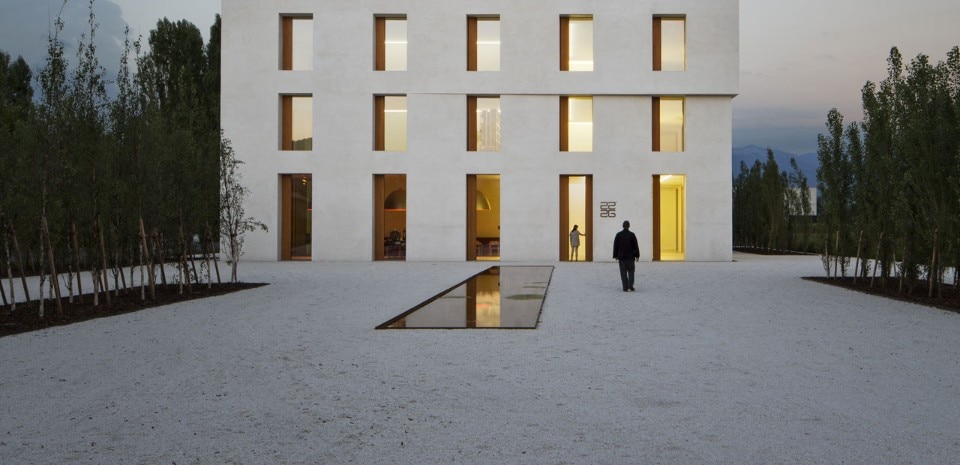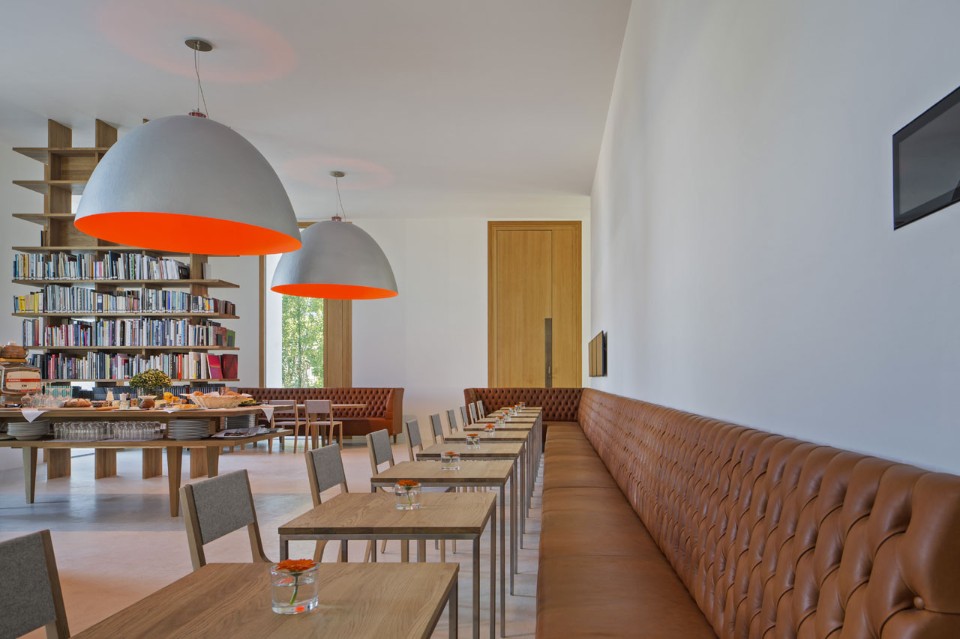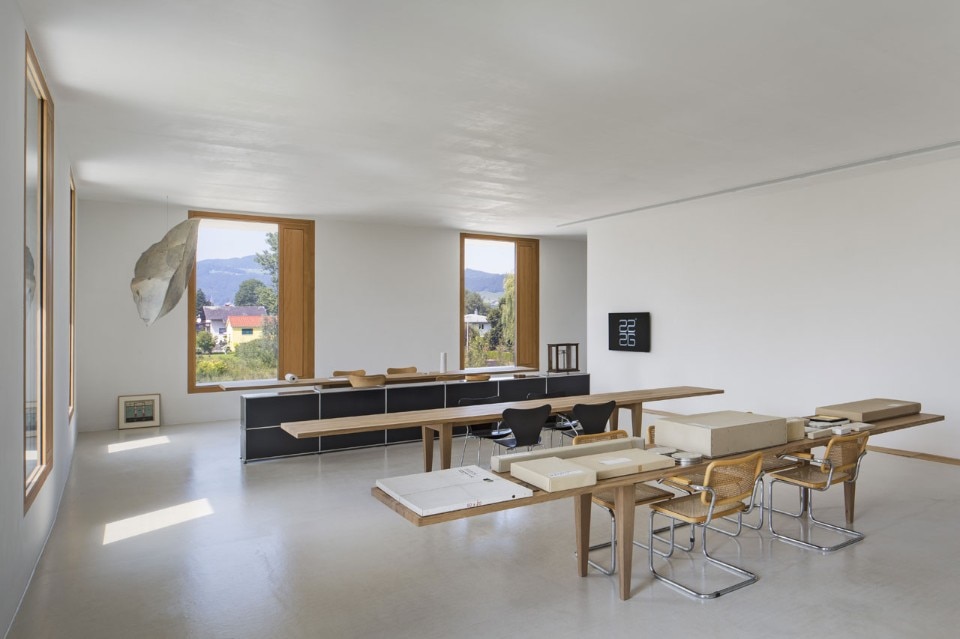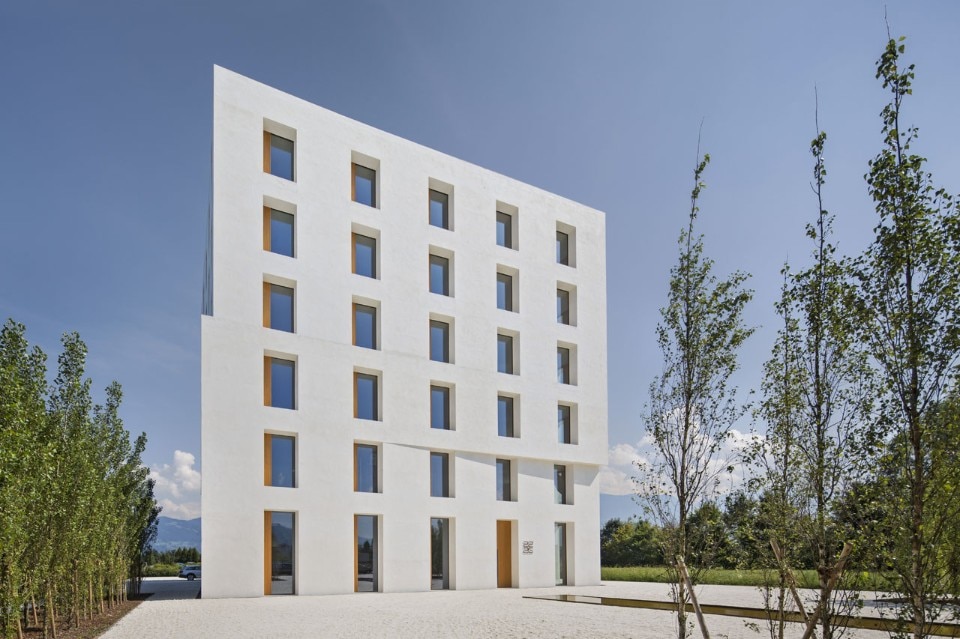
Due to its holistic approach, the sculptural form and optimized use 2226 will be substantially longer valid because it combines sustainability with cultural value. The name refers to the worldwide accepted comfort temperatures of 22 to 26 degrees Celsius.
Above all, however, this is a stone building with walls, doors and high-ceilinged rooms. It needs little grey energy, and elementary architectural means are used to create a sense of well-being that derives from the pleasant proportions and self-explanatory use.
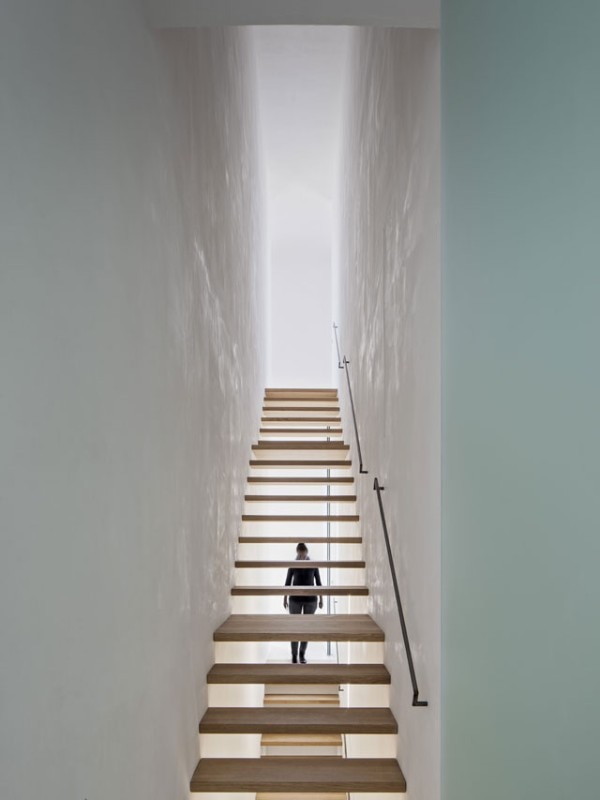
The envelope has a cavity wall structure with each wall consisting of 36-centimetre bricks. The inner layer of this interconnected shell ensures high compressive strength while the outer layer guarantees efficient insulation. Deep window reveals reduce the heat input, while vents fastened inside are controlled by sensors to provide a pleasant room climate. In winter, for example, the waste heat ensures a high energy input and the window vents only open if the volume of carbon dioxide in the room increases.
During hot weather in summer the vents open at night to induce a draught for natural cooling. Sensors support, in a perhaps less controlled manner, the normal activity of the occupants of a building that in conceptual, aesthetic and everyday terms will retain its validity for a long time to come.
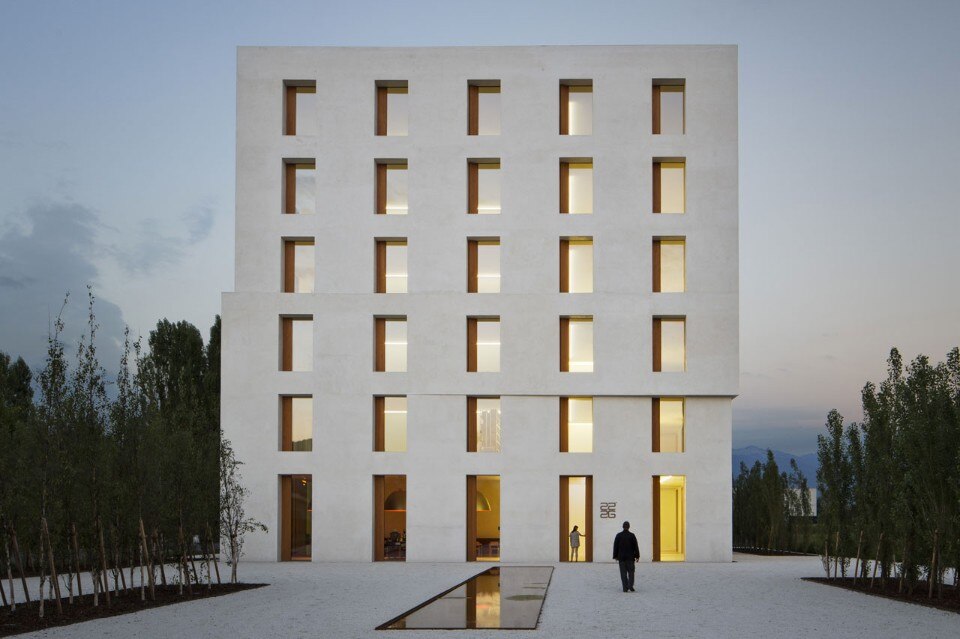
2226, Lustenau, Austria
Program: office building
Architects: Baumschlager Eberle
Project architect: Jürgen Stoppel
General contractor: Rhomberg Bau GmbH
Assistance: Hugo Herrera Pianno, Markus Altmann
Structural engineer: Mader & Flatz Ziviltechniker GmbH
Lightplanning: Ingo Maurer, SYMETRYS
Fire safety: IBS – Institut fur Brandschutztechnik und Sicherheitsforschung
Building physics: Ingenieurburo Kurzemann GmbH
Electroplanning: Elmar Graf GmbH
Energy optimization: Lars Junghans
BUS control: Peter Stefan Widerin
Brick: Wienerberger
Area: 543 sqm
Completion: 2013


